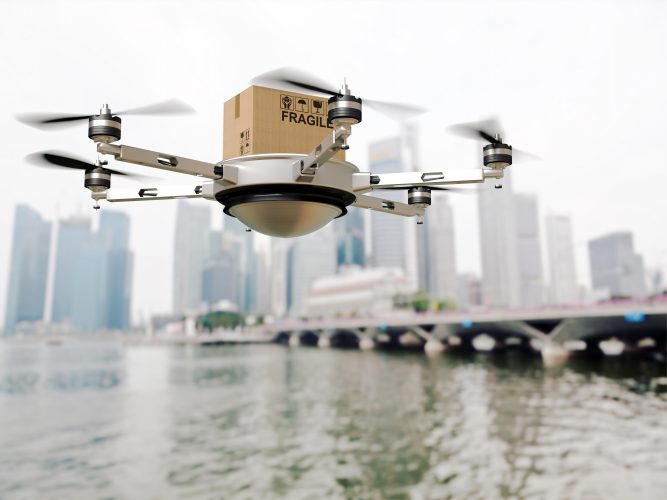More than 250 experts from 100 different organisations are participating in Eurocae WG 105, the working group tasked with development of standards and guidance documents that will allow the safe operation of Unmanned Aerial Systems (UAS) in all types of airspace, at all times and for all types of operations, according to Christian Schleiffer, Eurocae Secretary General. Schleiffer was speaking at the Royal Aeronautical Society (RAeS) workshop in London on 11 February 2019 entitled Drones: Law, regulation, standards and enforcement in UK and Europe. The standards agency is creating a rolling development plan that will be free to download online to show upcoming regulation and standards. Six focus teams are carrying out the work which includes special emphasis on UAS Traffic Management (UTM) and Remote Pilot Station (RPS) standardisation. This delivers a “performance-based regulatory framework which gives direction, and sets levels of compliance,” he said.
It also enables commercial operators to develop solutions without waiting for standards to be in place – provided they have an approved safety case. Mike Gadd, Head of International Regulatory Affairs at Altitude Angel and former Chair of the ICAO RPAS Panel, said some European countries are already leading the way, for example using Beyond Line Of Visual Sight (BVLOS) Remotely Piloted Aerial Systems (RPAS) to carry out remote surveys and inspections. “There is a saying that only dead fish go with the flow. We’ve got to start showing we can do it. Regulation allows this to happen today.” Gadd was referring to the 2018 Air Navigation Order covering UAS which supports any of type of operation, both VLOS and BVLOS, provided it meets specific aspects of safe flight.
Standards Director for RPAS-UK James Dunthorpe echoed this point: “Regulation is not holding the industry back. Private industry is better at innovation so leaving it to the private sector is the right way to go.”
NATS UK has been approving drone flights in controlled airspace for three years and introduced a UTM software capability 12 months ago to cope with increased demand. “The workload is about to go exponential as we see expansion of flight restriction zones around airports,” said Andy Sage, NATS Head of UTM. He said there is a misconception that BVLOS regulation is late. “When it comes to protection of national infrastructure, yes we are late, but when it comes to enabling more complicated BVLOS operations we need to be led by commercial drone operators.”
NATS is working with commercial BVLOS operators already going in this direction and anticipates a small deployment in the future. “You don’t want to be led by regulation,” said Sage. “It is hard, but no one is stopping you putting together a document and working out how you will address the air risk. Some are huge platforms, some are tiny platforms with nothing more than GPS and 5G on board. The UTM requirement in each case is completely different.” For this reason, Sage says the ‘U’ in UTM stands for Unified, and the standards and regulations developed for UTM will apply to all types of airspace. “We cannot afford to give away more airspace to single types of users and repeat the mistakes of the past. The existing world of manned aviation needs to adapt if we are to allow fair and equitable access to all users.”
By Jenny Beechener




